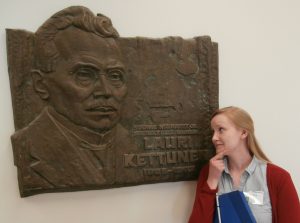The Finnish language belongs to the subgroup of Finnic languages within the Uralic family. It has mainly taken shape during the last thousand years. The Finnish language has two main dialects, eastern and western, and it is commonly divided into seven or eight dialects. Urbanisation took place relatively late in Finland, after the 1950s, and due to this the dialect data collected prior to that describes well the linguistic variation of Finnish.

In the BEDLAN project, we use population genetic approaches and methods to study Finnish dialects. We have used Bayesian model-based clustering methods on the Dialect Atlas of Finnish, collected by Lauri Kettunen in the 1920s and 1930s, and found the methods applicable to dialect data (Syrjänen et al. 2016).
We also found that dialectal differences within Finland are more connected with environmental differences than with geographical distance (Honkola et al. 2018). Thus, it seems that mere differences in environmental conditions may separate speaker populations in a comparable way to how environmental differences may separate populations of other species. Very interesting, huh!
